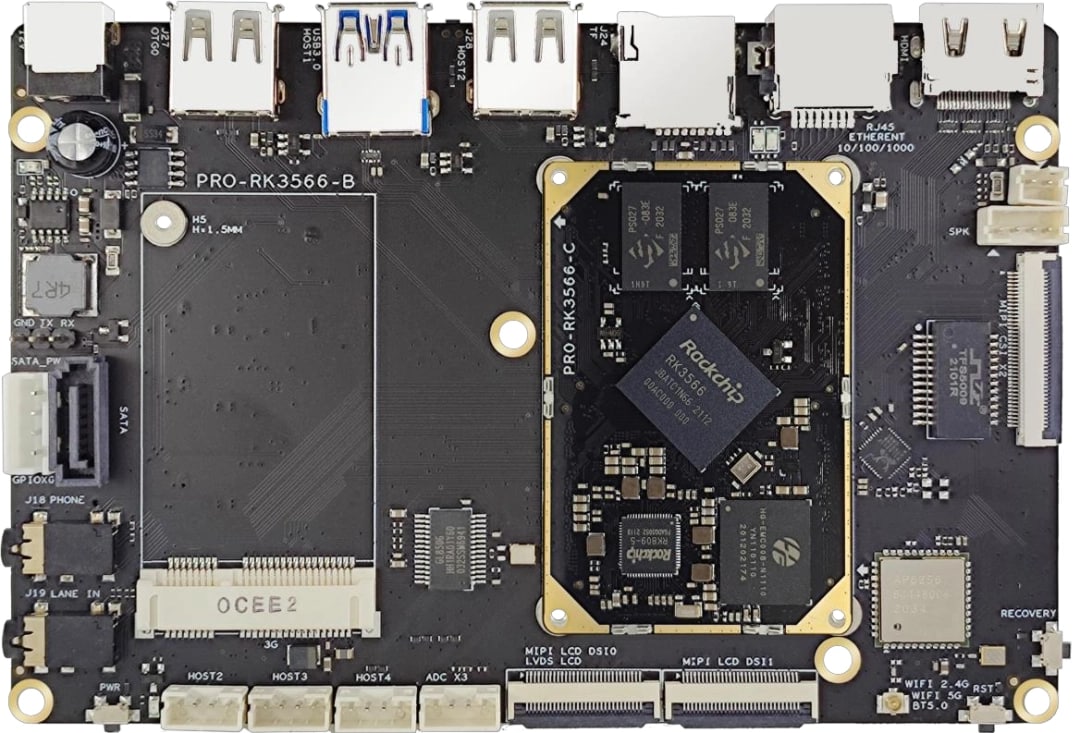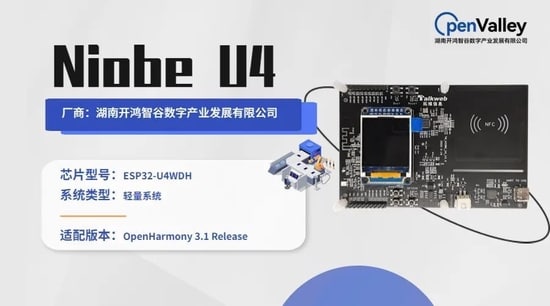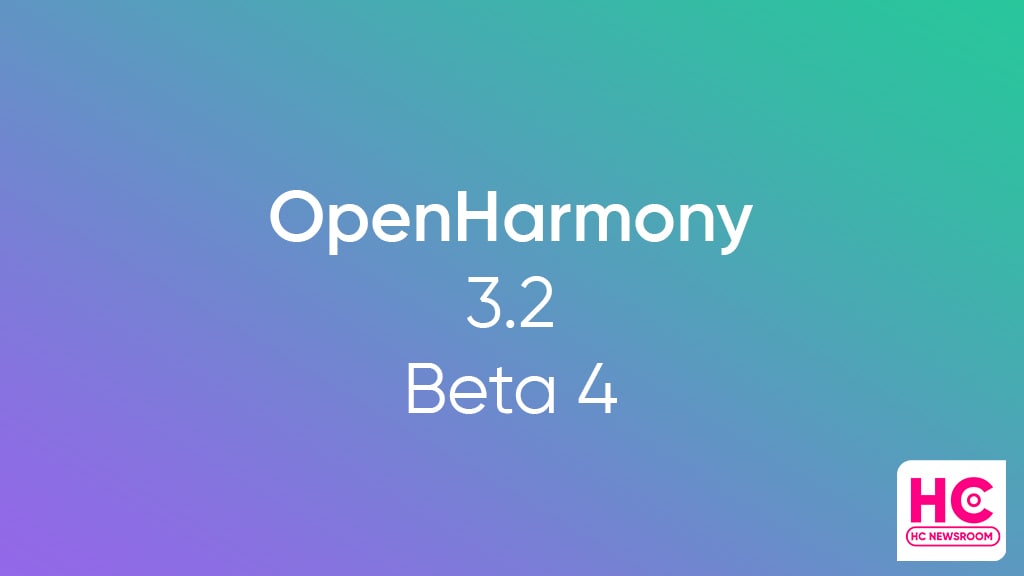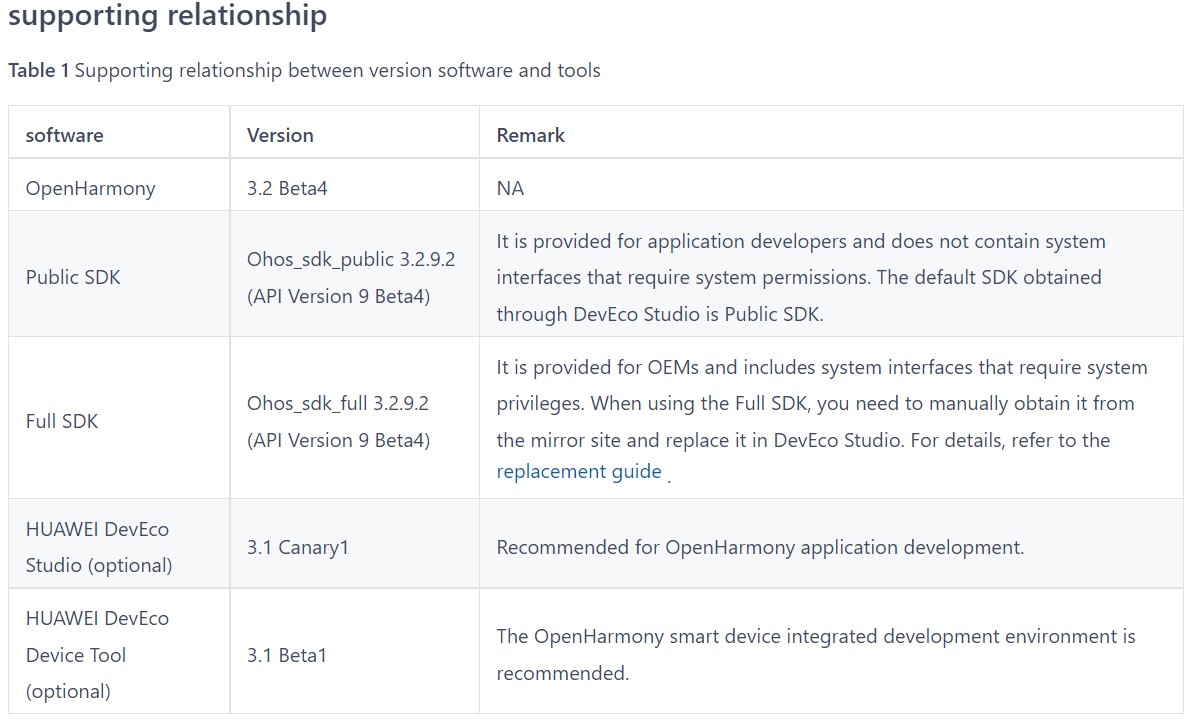Youbo launches new OpenHarmony-based UB-RK3566 processor
OpenHarmony-based HiHopeOS gets China UnionPay digital service certificate
Open Source HarmonyOS OpenHarmony 3.2 Beta 4 rolling out
New KS8123 electronic payment device supports OpenHarmony operating system
Niobe Northbound Application Lab Kit passes OpenHarmony eligibility test
Refurbished Huawei Mate 40 Pro 5G models open for sale on Vmall
Check the Huawei Nova 10 SE unboxing with 108MP camera
Huawei Enjoy 50z with 50MP triple camera will launch in December
Huawei Nova 10 SE will launch on December 2 in China
Huawei launched smartphone broken screen offline services
Huawei P40 Lite upgraded with EMUI 12.0.0.257
November 2022 update for Huawei Nova 9 SE expanding
Huawei Mate Xs 2 foldable getting November 2022 EMUI update
Huawei P50 Pocket’s November 2022 update out
Huawei Nova 9 SE grabs November 2022 EMUI update
December 2022 Google Play System update brings new changes to digital driver’s license
Google Play Store rules troubling Android users in US
Download Huawei Celia Keyboard [11.0.5.309]
Download Huawei HMS Core app (6.8.0.332)
Download Huawei Health app (13.0.1.300)
Huawei MatePad 11 gets new 8GB + 256GB storage version
Huawei MatePad SE tablets sold out in Indonesia
Huawei MateStation X 2022 specs leaked ahead of launch
New Huawei MateStation X 2022 all in one PC is coming
Huawei MateStation X 2022 to feature 12th gen Intel i9 processor
Huawei Watch Children 5X will bring detachable dual face display
Huawei Watch Buds is ready, check these pics before it launches
Huawei gets fifth position in Q3 2022 global wearables market: Report
Huawei Watch Buds will launch on December 2
Huawei Watch Buds leaked in short hands-on [Video]
Published
on
By
Recently, 2 new development chipboards were launched for the open-source Huawei HarmonyOS operating system –OpenHarmony. This launch will further improve the community backbone, and the OpenHarmony chip/development board platform has been further enriched.
So far there are 20 chips/development boards have been integrated into the OpenHarmony backbone, and the OpenHarmony ecosystem continues to grow.
The integration into the backbone means that more community developers and partners can build, improve and enrich various functions around the chip, and build more development versions covering different solution scenarios and categories.
For developers, it can greatly reduce the development threshold of OpenHarmony, which is convenient to develop at a lower cost and experience more of the latest features of OpenHarmony.
For enterprises in the industry, it greatly reduces the OpenHarmony development cost of chip adaptation. Hence, developers can quickly and cost-effectively create their own products, and more flexibly adapt to various terminals, jointly promoting the digital and intelligent transformation of the industry. 
It is reported that the 2 development chipboards of OpenHarmony are the KHDVK-3566B development board launched by Shenzhen Kaihong Digital Industry Development Co., Ltd. Digital Industry Development Co., Ltd. (referred to as “Kaihong Zhigu Company”) is a Niobe U4 development board based on ESP32 series chips.
Shenzhen Kaihong KHDVK-3566B is a smart screen development board based on OpenHarmony embedded KaihongOS, using ROCKCHIP RK3566 Cortex-A55 quad-core processor, with quad-core performance, high-energy drive, rich interfaces, and other features, the software has flexible tailoring, safety, and reliability.
The characteristics of resource sharing and seamless circulation are suitable for tablet computers, face-scanning cash registers, home appliance display screens, industrial robots, medical testing equipment, advertising machines, digital signage, teaching all-in-one machines, and other equipment, and are widely used in smart finance and smart industry. , smart education, smart energy, smart consumption, and other fields.
The Niobe U4 development board of Kaihong Zhigu Company is based on the ESP32-U4WDH chip. The chip is small in size, fast in speed, and powerful in function. It is a chip specially designed for the Internet of Things, with ultra-high RF performance and stability, versatility and reliability, as well as ultra-low power consumption, can meet different power consumption requirements, suitable for smart homes, smart education, and other applications scenarios.

The complete SDK provided by Kaihong Zhigu company and a large number of application examples blessing In this way, developers can quickly and easily carry out secondary development.
Huawei begins Watch 3/Pro series WeChat watch version testing
Huawei Nova 5/5i Pro/5z gets new system optimization update
Most of Deng Li’s smartphones are from the Huawei ecosystem and his first Huawei phone was Ascend Mate 2 (4G). As a tech enthusiast, he keeps exploring new technologies and inspects them closely. Apart from the technology world, he takes care of his garden.
Youbo launches new OpenHarmony-based UB-RK3566 processor
OpenHarmony-based HiHopeOS gets China UnionPay digital service certificate
Open Source HarmonyOS OpenHarmony 3.2 Beta 4 rolling out
Published
on
By
Youbo Technology cooperation has launched a new OpenHarmony-based UB-RK3566 processor. The chipset is mainly developed for IoT (Internet of Things) applications and smart devices.
According to the latest information, the OpenHarmony-based UB-RK3566 processor supports powerful functioning and brilliant performance on the surface. Besides, it is also eligible for high-end display engines and other technologies.
Further, the latest Youbo chipset is uprooted on an A55 process structure. It holds an ARM G52 2EE GPU and also supports a dual-screen display. Alongside tech-pack elements, the chip also uses a self-developed JPEG decoding microprocessor.
In terms of functions, the UB-RK3566 processor is capable of showcasing 1080 at 60 fps resolution, H0264, and H.265 format encoding, supports dynamic rate, frame rate, resolution adjustment, and many other display-related features.
On the other hand, the processor can efficiently work in dual-camera scenarios. Ultimately, operators can have a crystal clear image with effective lighting due to the UB-RK3566 chipset.
You can check the major functions, below:
- High computing power with less consumption: The processor installs a Rockchip RK3566 quad-core 64-bit Cortex-A55 unit and can easily support up to 0.8T computing power. Besides, it improves the battery life of devices
- Seld-developed display chips: The processor already holds finer display chips to reduce the excessive cost of display components. These chips can bear 2200 x 1650 resolution
- High-definition display: Since the processor has high-quality display chips, it offers an immersive virtual experience. It also supports HDMI 4K resolution at 60Hz, 1080P resolution at 60Hz, and more
- Complete display interface: the latest processor supports HDMI2.0 interface, supports dual-channel MIPI DSI, and can drive a 2.5K LCD screen. It also holds Eink, and can directly drive the ink screen.
- Rick Interface expansion facilities and Strong network wireless connection.
These functions make the processor compatible with high-end IoT applications and work conveniently without creating any hindrances in performance or functioning.
(Source)
Published
on
By
Runhe Software HiHopeOS (based on OpenHarmony) has received a new China UnionPay financial and digital service certificate. Eventually, this certification will make the respective OS compatible with the China UnionPay technical specifications.
To begin with, the China UnionPay cooperation is releasing new configurations for digital service devices. Accordingly, these devices require an operating system that can be eligible with the latest technologies and specifications.
Consequently, to obtain a suitable operating system, China UnionPay carried out a qualification program. A variety of operating systems entered into this scenario. However, the OpenHarmony-based HiHopeOS financial release version is the first product to get the China UnionPay certificate.
To be mentioned, HiHopeOS distribution consists of multiple variants for different scenarios and operations. For instance, the IoT Edition for operating lightweight devices and gadgets.
As of now, the HiHopeOS financial version has gained digital service certification. This development will help the Runhe Software cooperation to indulge with more ecological partners and expand the HiHopeOS ecosystem in more sectors.
Digital Service Certification
It’s worth mentioning that the latest digital service certification was based on the following major aspects:
- Basic requirements of the operating system
- Interface layer requirements
- System service layer
- Security functions and technology
- third-party library components
According to the outcomes, the HiHopeOS effectively meets all the points and is reliable with digital services and other high-end devices.
New developments with HiHopeOS
So far, Runhe Software has integrated with various industrial groups and partners to stretch the manufacturing of new products. Besides, the company has associated with several tech makers for smart inventions.
Up to this point, the company has developed smart POS, MPOS, code-scanning machines, cloud speakers, recorders, and many other useful products. Notably, these techs involve the HiHopeOS in their internal structures.
Alternatively, the new achievement of HiHopeOS will help Runhe Software to build a firm partnership with China UnionPay cooperation and develop more new products and services for consumers.
(Source)
Published
on
By
OpenAtom foundation has released open source HarmonyOS, OpenHarmony 3.2 Beta 4 for the developers. This version brings a number of new improvements to the kernel and internal features of the software.
To be mentioned, OpenHarmony 3.2 beta 4 is based on beta 3 and includes the following changes.
Enhancement of the basic capabilities of the standard system:
- The program access control subsystem supports forward CFI, API exception handling optimization, etc.
- The kernel subsystem supports Hyperhold memory expansion feature enhancement, F2FS terminal performance enhancement, and optimization.
- The multi-mode input subsystem supports enabling and disabling keyboard function keys, and multi-hot zone support related to input devices.
- The graphics subsystem supports the transmission of graphics data based on the shared memory mechanism, supports YUV layers, supports GPU composition on the RS side, and supports rotation and dynamic resolution of the virtual screen, etc.
- The upgrade subsystem supports AB hot upgrade function, flashd upgrade supports AB partition device upgrade, SD/OTG upgrade supports AB partition device upgrade.
- The globalization subsystem supports on-demand subscription of device management events, system resources support overlay difference, and resource management supports cross-OS platform capabilities.
- The Misc software subsystem supports uploading files in PUT mode, download management supports configuration download tasks, input method framework optimization and enhancement, and supports printing service framework.
- The DFX subsystem supports power consumption data collection, system event data collection, perf data collection, etc.
- The ArkTS API has newly added support for reporting error codes, helping developers quickly catch exceptions and improving the efficiency of exception handling.

Standard System Application Development Framework Enhancements
- Supports dynamic library isolation, operation management supports pending application interception.
- Support window attribute setting, support ArkTS card interaction, XComponent provides container component capabilities, etc.
- Supports configuration of application dependencies supports adding, deleting, and checking operations on the list of application installation and uninstallation, and supports adding, deleting, and checking operations on the list of applications that are prohibited from running.
Standard system distributed capability enhancement:
- Distributed hardware supports the same account credential parameter request and import.

Copyright © 2022 Huaweicentral.com